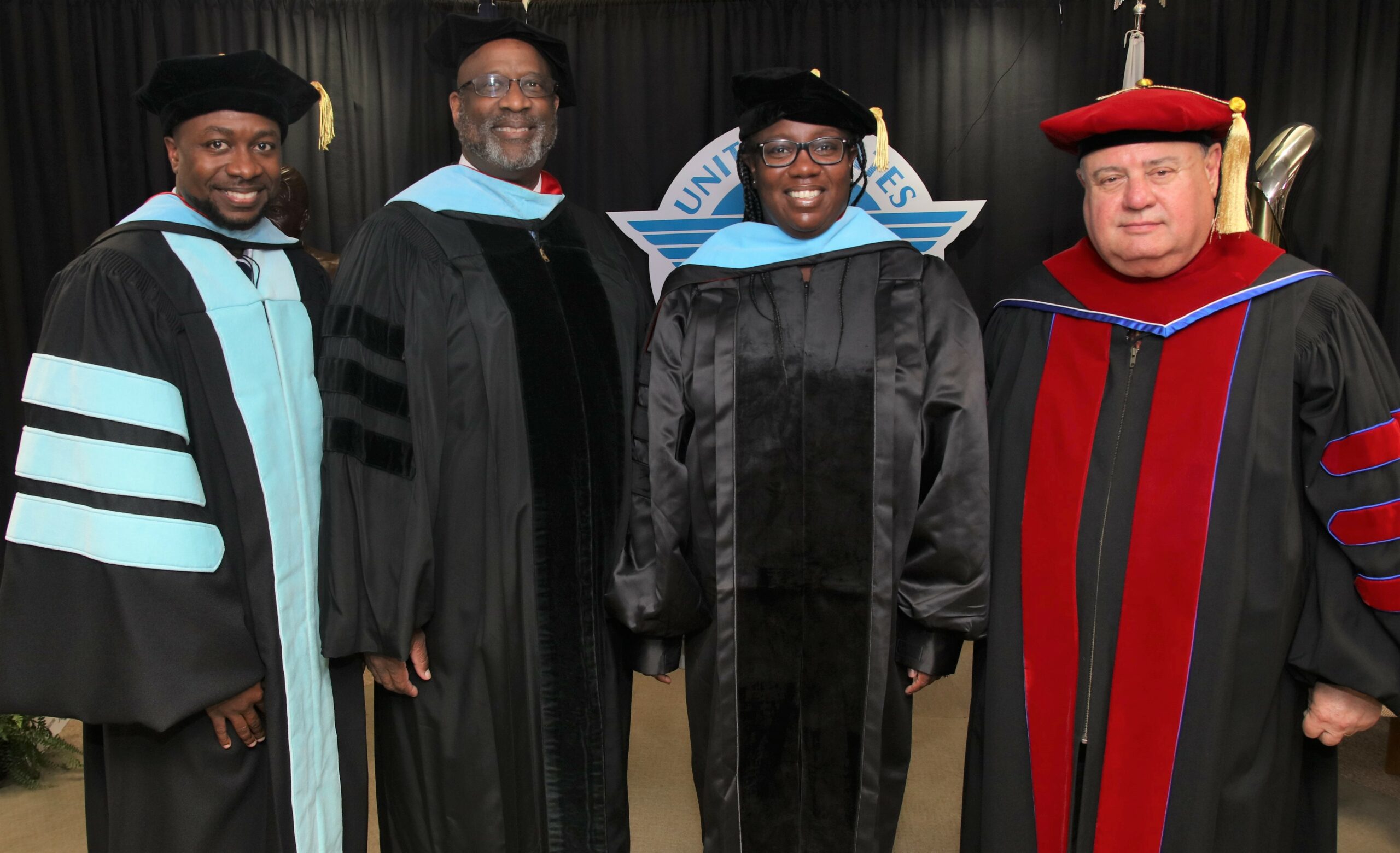
By Dr. Brandon Spradley and Dr. Fred Cromartie |
The United States Sports Academy continues to strive to meet its mission of making contributions to the field of sport by preparing men and women for the profession of sport. Today, the spotlight shines on Academy alumna Dr. Ciara Taylor.
Dr. Taylor works as an athletic trainer for Oak Mountain High School in Birmingham, Ala., and serves as the Vice Chairman of the Alabama Board of Athletic Trainers. Dr. Taylor recently earned her Doctor of Education in Sports Management from the Academy.
The dissertation is often the most challenging part of completing a doctoral degree. Dr. Taylor’s dissertation focused on examining the leadership behaviors of ethnically diverse female athletic trainers within the National Athletic Trainers Association (NATA). In her dissertation, Dr. Taylor mentions that female athletic trainers are the majority in the profession of athletic training; however, ethnically diverse female athletic trainers are significantly underrepresented.
Dr. Taylor was interviewed to talk about her experience in the dissertation process and provide helpful advice for doctoral students in the Academy’s program. Here is a synopsis of Dr. Taylor’s advice. You can watch the full interview below.
What advice would you give doctoral students in selecting a dissertation topic? “My topic came from our research advanced methods class. In the textbook, it said to use existing literature to kind of find the gap. You could also use social concerns, popular issues, personal characteristics, your professors, or other practitioners to kind of brainstorm on a topic. My topic was born out of personal characteristics. I am an ethnically diverse female athletic trainer, and I am a leader within our profession. I hold several positions within the National Athletic Trainers Association. I am also the Vice Chairman of the Alabama Board of Athletic Trainers.”
What advice would you give doctoral students in selecting their dissertation chair and committee members? “Dr. Spradley was my chair. I started taking notes from day one when I got to the Academy, every class, every professor I had. I would jot down notes about our personalities, our interactions, and I think with the chair, the most important thing was timely communication. You want to pick a chair who is not going to take two months to respond to you. You want positive feedback. You want clear and concise feedback.”
What was the most challenging part of the dissertation process and how did you overcome it? “The most challenging part was chapter 4, the stats. I had to hire a statistician to help and mentor me. It was a hard process, but that’s really the only way I got through it. I read in the dissertation manual to hire one, and I did from day one.”
What advice would you give doctoral students to help them cross the finish line and complete the dissertation? “Expect challenges. Expect speed bumps. There’s going to be hurdles. I had to go through IRB twice; I didn’t expect that. You’re going to have unexpected delays, just go into the process knowing that things are not always going to happen when you want them to happen, or when you think they’re going to happen. You have to be patient.”
Describe your overall experience and what you learned as a student in the Academy’s doctoral program. “I had a very positive experience. I didn’t really have much setbacks, and when I did, I was supported. I had my committee and professors, and even the staff at the Academy, who were always available to answer my questions. It was a marathon; it’s not a sprint. It’s not going to be quick, so I just learned to be resilient. I learned that things are going to come up and you just have to adjust. I think the biggest thing I learned from the Academy is to be a critical thinker. I learned how to apply what I was learning in my classes to the clinical setting. I am an athletic trainer at a secondary school, so I love when I can apply that stuff, especially the leadership aspect of it. I learned to refine my research skills. It had been years since I did a research project. I learned to be resilient. You’re going to get knocked down, but get back up.”